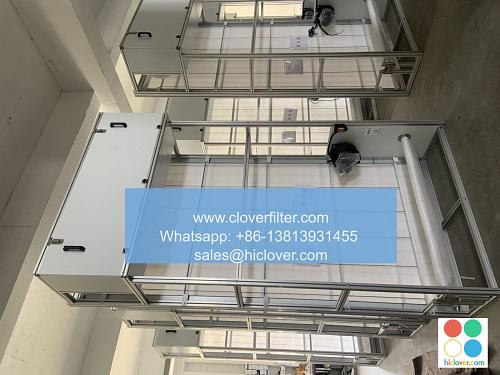Air Filter Regulations in the US: What You Need to Know

As the demand for indoor air quality solutions and air pollution control measures continues to grow, the importance of understanding air filter regulations in the US cannot be overstated. In this article, we will delve into the world of air filtration standards, regulatory compliance, and industry certifications, highlighting various application areas and providing valuable insights for homeowners, businesses, and industry professionals.
Introduction to Air Filter Regulations
The US has a complex system of air quality regulations, with various agencies and organizations playing a crucial role in shaping the industry. The Environmental Protection Agency (EPA), Occupational Safety and Health Administration (OSHA), and American Society of Heating, Refrigerating, and Air-Conditioning Engineers (ASHRAE) are just a few examples of the key players involved in regulating air filter standards. These organizations have established guidelines and protocols for air filter testing, certification, and labeling, which aim to ensure the efficacy and safety of air filtration products.
Key Regulations and Standards
Some of the most significant air filter regulations in the US include:
- ASHRAE Standard 52.2: This standard provides a framework for air filter testing and rating, focusing on particulate matter removal and airflow resistance.
- EPA Energy Star Certification: This certification program recognizes energy-efficient air filtration products that meet specific performance criteria.
- OSHA Indoor Air Quality Guidelines: These guidelines provide recommendations for indoor air quality management, including the use of air filters to reduce pollutant concentrations.
- Commercial HVAC: Air filters play a critical role in maintaining indoor air quality in commercial buildings, with regulatory compliance being essential for business owners and facility managers.
- Industrial Air Pollution Control: Air filters are used to reduce emissions and pollutant concentrations in industrial settings, with regulations governing their use and performance.
- Residential Air Quality: Homeowners can benefit from understanding air filter regulations, as they can make informed decisions about air filtration products and indoor air quality solutions.
- MERV Rating: This rating system provides a standardized way to evaluate air filter performance, with higher MERV ratings indicating greater efficacy.
- UL Certification: This certification mark indicates that air filtration products have met specific safety standards and performance criteria.
- California Air Resources Board (CARB) Certification: This certification program recognizes air filtration products that meet stringent standards for indoor air quality and emissions reduction.
Application Areas and Industry Sectors
Air filter regulations have a significant impact on various industry sectors, including:
Certifications and Labels
To ensure regulatory compliance and product performance, various certifications and labels have been introduced, including:
Conclusion
In conclusion, air filter regulations in the US are complex and multifaceted, with various industry sectors and application areas being affected. By understanding air filter standards, regulatory compliance, and industry certifications, homeowners, businesses, and industry professionals can make informed decisions about air filtration products and indoor air quality solutions. As the demand for clean air and healthy environments continues to grow, the importance of air filter regulations will only continue to increase, highlighting the need for ongoing education and awareness in this critical area.
You’ve provided a prompt, but it doesn’t contain a question or topic for discussion. Could you please provide more context or clarify what you would like to talk about? I’ll do my best to provide a helpful and informative response. What’s on your mind?

